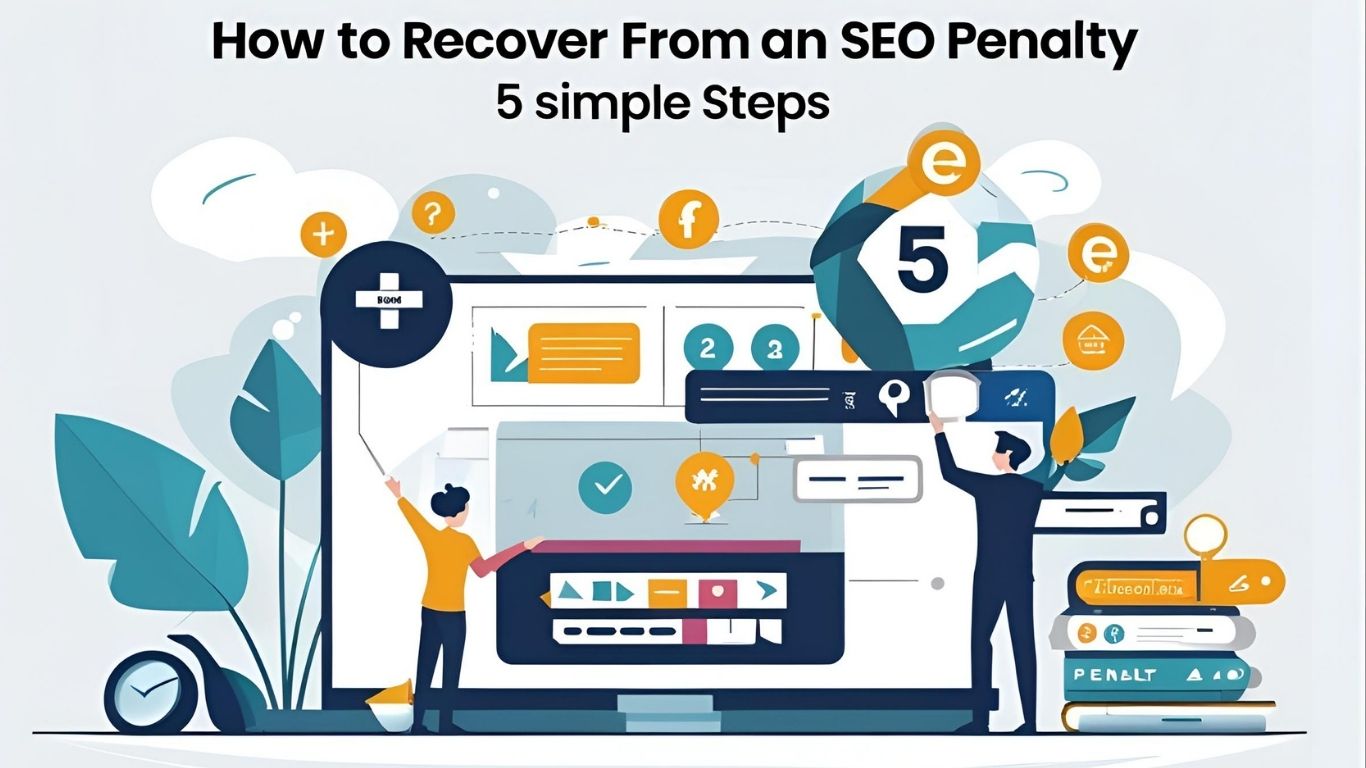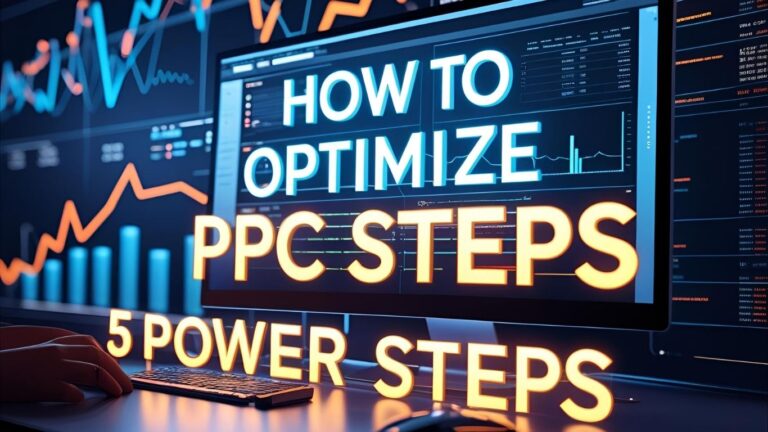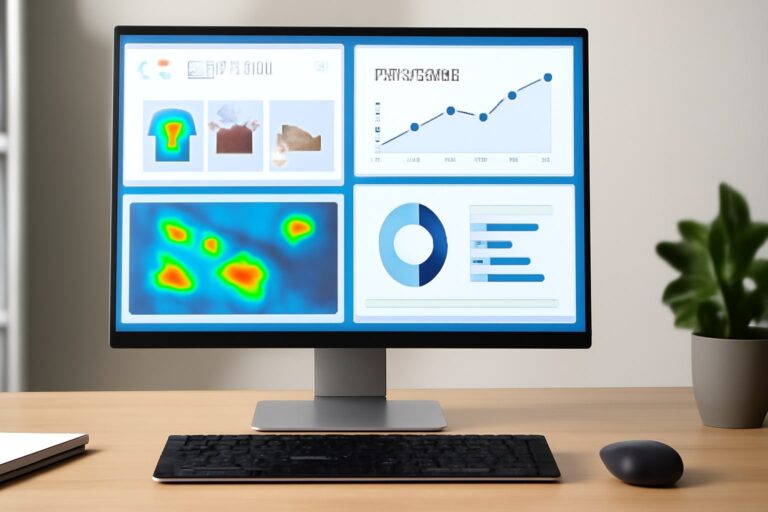How to Recover from an SEO Penalty: 5 Actionable Steps for Immediate Results #SEORecovery, #SEOTips, #PenaltyFix
How to Recover from an SEO Penalty Guide 5 Simple Steps
SEO penalties can feel like a sudden, harsh slap in the face. You’ve worked hard on optimizing your website, ensuring it’s fast, responsive, and packed with quality content, yet your rankings tumble, and traffic disappears. What went wrong? If you’ve found yourself in this frustrating position, don’t worry – this article will guide you through how to recover from an SEO penalty in 5 simple steps.
In this guide, we’ll cover everything from diagnosing the penalty to submitting a reconsideration request, all while giving you practical tips to regain your position on search engines. So grab your metaphorical toolkit and let’s get started!
H1: How to Recover from an SEO Penalty Guide 5 Simple Steps
When it comes to SEO penalties, the most important thing is to stay calm. Sure, it’s frustrating, but with the right steps, you can recover and even improve your site’s performance beyond where it was before. But how do you begin this recovery process? What do you need to check, fix, and reconsider to lift the penalty? Let’s break it down.
Step 1: Diagnosing the Penalty
The first step in how to recover from an SEO penalty in 5 simple steps is diagnosing exactly what caused the penalty. This is crucial because only when you understand the cause can you take the proper actions to resolve it.
Analyzing Traffic Decline
The best place to start is your traffic. If your organic traffic has taken a sudden dip, then something is wrong. Head to your Google Analytics and take a look at any significant drops. You’ll also want to cross-reference with Google Search Console, where you may find a message explaining the reason for the penalty. Some common penalties are manual penalties (given by Google directly), while others might be algorithmic, like a Google Penguin or Panda penalty.
Tools to Identify SEO Penalties
There are several tools that can help you identify exactly what’s gone wrong. Google Search Console is your first stop; it will often notify you of manual penalties, which can help you narrow down the problem quickly. For algorithmic penalties, tools like SEMrush, Ahrefs, and Moz are valuable as they provide detailed reports on backlink profiles, keyword rankings, and site health.
Common Penalty Triggers
There are many potential causes for an SEO penalty. Some of the most common include:
Low-quality content: Duplicate, thin, or irrelevant content can get you penalized.
Over-optimization: Too many keywords stuffed into your content can hurt you.
Toxic backlinks: Backlinks from low-quality or spammy sites can trigger penalties.
Technical issues: Slow site speed, mobile unfriendliness, or poor UX can lead to penalties.
Step 2: Fixing Technical Issues
Once you’ve diagnosed the penalty, the next step in how to recover from an SEO penalty in 5 simple steps is fixing any technical issues on your website. Many penalties are triggered by overlooked technical errors, which might seem minor but can severely impact your rankings.
Site Audits: What to Check
A thorough site audit is a must. Use tools like Screaming Frog, SEMrush, or Ahrefs to crawl your site and identify any technical issues. These tools will help you spot things like broken links, duplicate content, or slow loading pages.
Site Speed: Websites that take too long to load are penalized. Aim for a loading time of under 3 seconds.
Mobile Optimization: With mobile-first indexing, it’s essential that your website is fully optimized for mobile users. Google heavily factors in mobile-friendliness for rankings.
HTTPS: If you haven’t moved to HTTPS yet, do it now! Websites without SSL certificates may suffer in rankings.
Mobile Optimization for SEO
In today’s world, a mobile-friendly website is no longer optional – it’s a must. Google uses mobile-first indexing, meaning it primarily uses the mobile version of your site for ranking and indexing. If your site isn’t mobile-friendly, this could be a significant factor in why you received a penalty.
Redirects and Broken Links
Broken links, whether internal or external, can also harm your rankings. They create a poor user experience, and Google doesn’t like that. Tools like Ahrefs and Google Search Console can help you identify broken links on your site and fix them immediately. Also, make sure you have proper redirects set up to avoid any link errors.
Step 3: Content Quality Improvements
Next up in how to recover from an SEO penalty in 5 simple steps is content improvement. Google’s algorithms are always getting better at detecting low-quality, duplicate, or irrelevant content. So, if you’re still writing for the search engines rather than your users, it’s time to change that.
Enhancing User Experience
Google values content that provides value to the user. That means your content should be engaging, informative, and solve real problems. To avoid penalties, stop focusing on keyword stuffing and focus on creating high-quality, original content that adds value.
Removing Thin or Duplicate Content
If you have content that doesn’t provide much value (a few hundred words without any real depth), consider either expanding it or removing it. Google penalizes websites that have lots of thin content. Similarly, duplicate content can trigger penalties, so make sure that every page on your site is unique.
Creating Engaging and Original Content
Now, the fun part: writing content that people actually want to read! Whether it’s a blog post, product description, or an article, focus on creating something engaging. Use real-life examples, tell stories, and provide actionable advice. Google loves content that is engaging, original, and useful.
Step 4: Building High-Quality Backlinks
A healthy backlink profile is one of the most important factors in SEO. But, when recovering from a penalty, you need to make sure that the backlinks you’re building are high-quality.
Why Backlinks Matter
Backlinks act as votes of confidence for your site. When other websites link to your content, it signals to Google that your website is trustworthy and valuable. However, low-quality or spammy backlinks can work against you, leading to penalties.
Identifying Link Building Opportunities
Look for opportunities to build backlinks from reputable sources. You can start by guest posting, collaborating with influencers, or even reaching out to other websites in your niche for link-building opportunities.
Avoiding Toxic Links
Be cautious about the quality of backlinks you’re building. Avoid backlinks from shady sources or link farms, as they can trigger penalties. If you’ve acquired toxic links in the past, you can disavow them using Google’s Disavow Tool.
Step 5: Submitting a Reconsideration Request
Once you’ve fixed all the issues on your website, it’s time to ask Google to reconsider your site’s status.
How to Submit Your Request
After resolving the penalty-causing issues, submit a reconsideration request through Google Search Console. In the request, be honest and transparent about the actions you’ve taken to resolve the issue. Clearly explain how you’ve fixed the problem and what steps you’ve taken to ensure it won’t happen again.
Writing a Persuasive Reconsideration Letter
When writing your reconsideration letter, keep it concise but thorough. Address the penalty directly, explain the changes made, and assure Google that your site now adheres to their guidelines. A well-written letter increases your chances of having the penalty lifted.
Common Mistakes to Avoid in Reconsideration
Avoid being vague or dismissive in your reconsideration letter. Don’t blame Google or external factors for the penalty. Be specific and show that you understand the issue.
After Reconsideration: Monitoring Progress
Once you’ve submitted the reconsideration request, it’s time to monitor your progress.
How Long Does It Take to Recover?
Recovery timelines vary depending on the severity of the penalty and how well you’ve addressed the issue. It may take anywhere from a few weeks to a couple of months to see significant changes.
Preventing Future Penalties
After recovering, focus on maintaining a healthy website. Regularly audit your site, keep up with Google’s guidelines, and avoid black-hat SEO tactics that could lead to another penalty.
How to Prevent Future SEO Penalties
One of the best ways to avoid penalties in the future is to follow best SEO practices consistently.
Best SEO Practices to Follow
Focus on high-quality content, natural link-building, and technical SEO. Ensure your website is mobile-friendly, fast, and provides a great user experience. By adhering to Google’s guidelines, you’ll minimize the risk of penalties.
H3: Staying Informed with Algorithm Changes
Google updates its algorithms regularly, and staying informed about these changes is crucial. Follow SEO blogs, attend conferences, and make sure your SEO strategy is always up to date.
Conclusion: Moving Forward with a Strong SEO Strategy
SEO penalties are tough, but with the right approach, you can not only recover but also improve your website’s rankings. By following the 5 simple steps outlined in this article, you’ll be able to bounce back stronger, avoid future penalties, and build a robust SEO strategy for long-term success.
Bullet-Point Summary:
- Diagnose the SEO Penalty: Identify the cause of the penalty using Google Analytics and Search Console.
- Technical Fixes: Conduct a full site audit to fix technical issues like slow site speed, mobile optimization, and broken links.
- Content Quality: Improve or remove low-quality content, focusing on high-quality, original content.
- Backlink Strategy: Build high-quality backlinks and remove toxic links to strengthen your site’s authority.
- Reconsideration Request: Submit a thoughtful reconsideration request to Google, detailing the changes made to recover from the penalty.
- Prevention: Stay updated with SEO best practices and monitor your site regularly to avoid future penalties.
- Step-by-Step Recovery: The article breaks down each step needed to recover from SEO penalties in an easy-to-follow manner.
- Tools for Recovery: Discusses tools like Google Search Console, Ahrefs, and SEMrush for penalty identification and resolution.
- Timeframe for Recovery: Recovery can take weeks or months, depending on the severity and the actions taken.
- User Experience: Emphasizes the importance of mobile-friendliness and site speed in SEO recovery.
- Continuous Improvement: Maintain SEO efforts by regularly auditing your site and staying current with Google’s algorithm updates.
FAQs:
What is an SEO penalty?
An SEO penalty is a punishment imposed by search engines like Google for violating their guidelines. It can lead to a drop in search engine rankings or complete removal from search results.
How do I know if I’ve received an SEO penalty?
A sudden drop in organic traffic, ranking decreases, or a notification from Google Search Console can signal that you’ve been penalized. Manual penalties are typically reported, while algorithmic penalties require deeper analysis.
How long does it take to recover from an SEO penalty?
Recovery time depends on the severity of the penalty and the actions you take. It can take anywhere from a few weeks to several months, especially if reconsideration requests are involved.
Can an SEO penalty be lifted?
Yes, SEO penalties can be lifted once you’ve fixed the issues that caused them. This usually involves submitting a reconsideration request to Google after addressing the violations.
How can I prevent future SEO penalties?
Regularly audit your website, follow SEO best practices, stay updated with Google’s guidelines, and avoid black-hat SEO tactics.
What are common reasons for receiving an SEO penalty?
Common reasons include using black-hat SEO techniques, low-quality content, toxic backlinks, keyword stuffing, and mobile unfriendliness.
Can I recover without a reconsideration request?
For algorithmic penalties, recovery can happen naturally once the issues are addressed. However, for manual penalties, submitting a reconsideration request is necessary to lift the penalty.
How do I fix my backlink profile after an SEO penalty?
Remove toxic or low-quality backlinks, disavow harmful links via Google’s Disavow Tool, and focus on building high-quality, relevant backlinks from authoritative sources.
What tools can help in penalty recovery?
Tools like Google Search Console, Ahrefs, SEMrush, and Screaming Frog are essential for diagnosing penalties and performing site audits.
How does Google’s mobile-first indexing affect SEO penalties?
Google prioritizes mobile versions of websites in its rankings. If your website isn’t mobile-friendly, it can result in penalties. Make sure your site is responsive for mobile users.
What should I include in a reconsideration request?
Your reconsideration request should clearly state the penalties you’ve fixed, what actions you’ve taken, and demonstrate your commitment to following Google’s guidelines in the future.
Can technical SEO issues lead to penalties?
Yes, issues such as broken links, slow site speed, or a lack of SSL certificates can negatively impact SEO rankings and lead to penalties.
Should I remove low-quality content from my site?
Yes, removing or improving thin, duplicate, or irrelevant content is important to regain rankings. Focus on creating high-quality, user-focused content.
Is it necessary to work with an SEO expert for penalty recovery?
While it’s possible to handle penalty recovery on your own, working with an SEO expert can speed up the process and ensure that you’re following the best practices.
Can I avoid SEO penalties by only focusing on on-page SEO?
No, SEO is about a balanced approach. You need to focus on on-page SEO (like content and site speed), off-page SEO (like backlinks), and technical SEO (like mobile-friendliness and security) to avoid penalties.
Explore These Valuable Resources
To help you recover from an SEO penalty and master the nuances of SEO recovery, here’s a curated list of essential resources. These expert links will enhance your understanding of SEO best practices, penalties, and recovery strategies.
Google Webmaster Guidelines – Google’s Official SEO Guidelines
Start with Google’s own guidelines to understand what Google expects from your website and avoid penalties.
Moz Beginner’s Guide to SEO – Moz SEO Guide
Moz’s beginner-friendly guide offers a solid foundation on SEO basics, including technical aspects that can help prevent penalties.
Ahrefs SEO Blog – Ahrefs SEO Insights
Ahrefs provides expert tips and case studies, especially helpful for those recovering from SEO penalties and building high-quality backlinks.
Search Engine Journal – SEO Recovery Strategies
Search Engine Journal regularly updates its readers with actionable strategies for SEO recovery and optimization.
Google Search Console Help – Google Search Console Guide
Understand how to use Google Search Console to monitor site performance and identify issues that might lead to penalties.
Backlinko’s SEO Techniques – Backlinko SEO Blog
Brian Dean’s blog is a goldmine for in-depth SEO strategies, especially for recovering from penalties and building a healthy backlink profile.
SEMrush SEO Tools – SEMrush Blog
SEMrush’s blog offers valuable insights into SEO audits, penalty recovery, and how to track and improve your website’s performance.
Neil Patel’s SEO Tips – Neil Patel Blog
Neil Patel’s blog shares actionable SEO advice for both beginners and advanced users, with a focus on avoiding penalties and growing organic traffic.
Google’s Disavow Tool – Google Disavow Tool
Learn how to use Google’s Disavow Tool to remove harmful backlinks that may contribute to an SEO penalty.
Yoast SEO Blog – Yoast SEO Insights
Yoast’s blog covers SEO best practices, penalties, and how to ensure your site is optimized for Google’s evolving algorithms.
Search Engine Watch – SEO Penalty Insights
Stay updated with the latest news, insights, and strategies on SEO penalties and recovery.
HubSpot’s SEO Resources – HubSpot SEO Resources
HubSpot’s marketing blog provides practical advice for SEO, including techniques for improving your rankings and avoiding penalties.
Google’s Quality Rater Guidelines – Google Quality Rater Guidelines
Understand what Google’s human raters look for when assessing websites, helping you fine-tune your content and avoid penalties.
SEJ’s SEO Penalty Guide – SEO Penalty Recovery Guide
Dive into this in-depth guide on SEO penalty recovery, offering step-by-step instructions on regaining lost rankings.
SEO Roundtable – SEO Roundtable Blog
A well-respected source for the latest trends and updates in SEO, including penalty news and algorithm changes.
By exploring these insightful resources, you’ll deepen your understanding of SEO penalties and enhance your ability to recover from them effectively. With the right tools and knowledge, you can prevent penalties in the future while boosting your site’s performance.
Blog Recommendation:
For more in-depth insights on SEO and digital marketing, be sure to check out Rizwan’s Blog, where you’ll find detailed posts on SEO strategies, website optimization, and much more!
Services:
Looking to improve your website’s performance and SEO? Explore our professional services at GetRizwan Services for tailored solutions that help boost your site’s rankings.
Portfolio:
Check out our previous successful projects at GetRizwan Portfolio to see how we’ve helped clients recover from SEO penalties and enhance their online presence.
Shop:
Ready to enhance your website with high-quality tools? Visit our Shop for top-rated resources and products that will optimize your digital strategy.
LinkedIn:
Stay connected and follow Rizwan on LinkedIn for the latest updates, tips, and professional insights on SEO and digital marketing.







